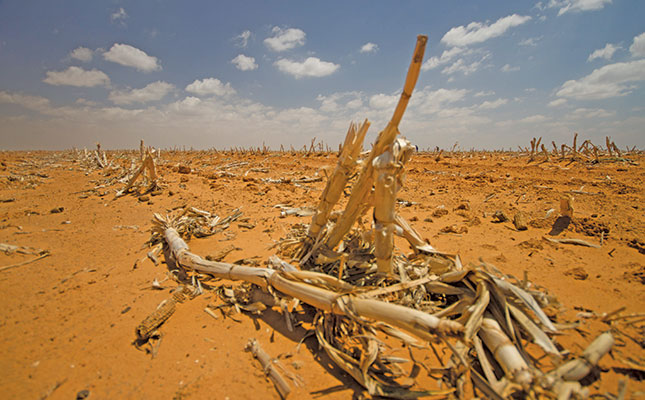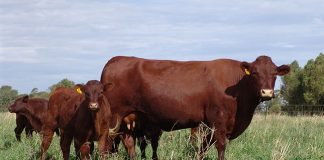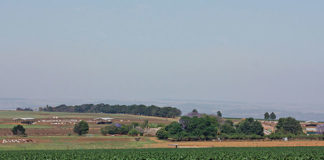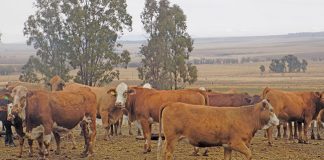
Photo: FW Archive
Drought, especially if prolonged, leads to a decline in veld condition, livestock numbers and the financial situation of a livestock enterprise. Once the drought breaks, the livestock farmer faces a burning question: what are the best practices for repairing drought damage and rebuilding the farm to its former level of productivity?
But before answering this, the farmer has to answer another question: which comes first, the veld, the livestock or the finances?
The answer is that all three should be repaired simultaneously as they are interdependent. But implementation is not that simple.
Recommendations
The following should be borne in mind when carrying out the recovery and rebuilding process:
- A drought-stricken farm, like a patient in an intensive care unit (ICU), needs treatment that produces positive results from the start. There is no time for experimenting or taking risky decisions. The right medicine is often bitter, but essential.
- Seek the advice of a multidisciplinary team consisting of experts in grazing management, animal husbandry and agricultural economy. This team should determine the condition of the farming concern in the ICU and develop a comprehensive turnaround Recoverystrategy. It is all well and good to hope, but hope on its own is akin to gambling.
- Base all decisions on a sound plan and good judgement. A clear head and self-discipline are also crucial. Sentiment, poor farming practices, emotion and impulsiveness should be avoided at all cost.
- Remember that there are no quick fixes; the process takes time.
- Focus fully on the turnaround strategy during the repair and reconstruction process and make timely adjustments when necessary.
- The most important pillars in the process of recovery and reconstruction are precision farming and sustainability.
Veld recovery
Veld in a good condition is a major profit driver in livestock farming. It has four advantages over veld in a poorer condition.
Firstly, its soil-available water content is substantially higher, even though both receive the same amount of rainfall.
Secondly, the plants that dominate good veld produce substantially more grazing material with the same amount of water, with a resultant higher carrying capacity.
Thirdly, the plants that dominate veld in good condition have a better nutritional value than those growing on poorer veld.
Lastly, good veld produces substantially better profit per hectare.
When carrying out veld recovery, follow these guidelines:
- Synchronise the recovery of livestock numbers with the rate at which the veld is recovering. Take care that the carrying capacity of the veld and the livestock numbers
match. The carrying capacity of the veld will be weakened at the end of the drought and will improve gradually as the veld recovers. - Try to keep the animals on non-veld resources, such as planted pastures, for as long as possible after the drought is broken.
If this is unavailable, start off by grazing those veld types that are least susceptible to grazing damage, while giving more vulnerable and valuable veld types an opportunity to recover.
More robust veld types are usually found on mountains and ridges, and paddocks with a large proportion of less palatable plants on shallow and rocky soil.
If no such veld is available, select a number of paddocks and ‘sacrifice’ them while resting the remainder of the farm to full recovery. The damage done to these paddocks during the recovery phase can be repaired later by giving them special treatment, such as a full season’s rest.
- Whatever you do, avoid throwing open the gates and allowing the livestock to graze indiscriminately everywhere on the farm during the recovery phase. This the worst possible action. Livestock are selective in their grazing habits and will therefore graze the more palatable plants and plant parts first. The result will be damage to the more palatable plants while they are not yet fully recovered, and the livestock will waste energy going after these plants.
- Return to the normal grazing system as soon as the veld has recovered fully. If you did not have a good rotational grazing system in place before, now is a convenient time to implement one.
- Undesirable invader woody plants will use the favourable conditions after the drought to increase their numbers. Eradicate them while they are still young, as they are much easier and hence more affordable to remove at this stage than as adult plants.
Recovery of the herd and livestock numbers
Farmers often struggle with deciding whether to rebuild their herd or flock from their own breeding stock, or to purchase animals. Many factors determine the answer to this age-old dilemma.
The correct decision will depend mainly on its effect on cash flow and the rate at which the veld recovers.
The key factors to consider when planning this part of the turnaround strategy are:
- The number and age of the animals left in the core breeding herd after the drought, and the condition of those animals;
- The purchase price of breeding animals;
- The availability of animals that were moved to other farms during the drought. Animals brought in from other properties pose a biosecurity risk.
- The availability of the capital of the animals sold during the drought and invested elsewhere. Remember that liquidation of this capital may have income tax implications.
The rate at which a herd can be recovered is directly correlated with its reproduction rate, regardless of whether you buy the stock or use your own animals for herd recovery.
The turnaround strategy should therefore focus on achieving maximum reproduction rates through precision reproduction management strategies. This includes precision management of the flock, nutrition and health.
Financial recovery
When drafting the financial part of the turnaround strategy, use the following guidelines:
- Make sure the business is solvent.
- If it is, determine the farm’s ability is to cover its financial responsibilities. A simple calculation is to divide all the farm’s financial obligations (operating costs, debt repayments and your remuneration) by the number of breeding ewes that can be carried. This figure will show whether the breeding herd can service these obligations. A burden of R2 500/ ewe/year, for example, is not feasible.
- If it turns out that the herd or flock will be unable to service the farm’s obligations, determine how much of your own capital can be used to reduce the obligations to an acceptable level, for example a beach property.
- Develop a series of scenarios employing cash flow budgeting techniques and financing models. The planning horizon of the budgets should be long enough to clearly indicate the progress until the farm has recovered fully. Don’t forget to take personal finances into consideration as well. Then compile a complete business plan that clearly outlines all the components of the turnaround strategy.
- Visit your bank manager with this business plan. A bank manager may not have much confidence in a farmer’s business plan, particularly if that farmer has failed to stick to his or her plans in the past. If this is true for your situation, make sure that the bank manager understands you are committed to adhere to this business plan, otherwise you may not get the help you need. Even the best of plans go awry. For this reason, monitor the course of the turnaround strategy and make timely adjustments. To get help with this, you will probably need an independent adviser who can quickly identify problems, even before they occur. This person can also act as a management coach and assist you to execute the turnaround strategy.
Email Dr Louis du Pisani at [email protected].











